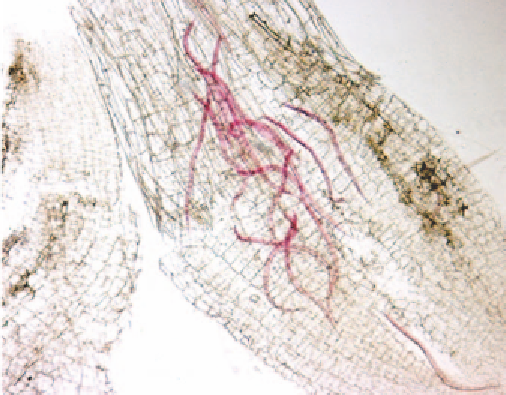Agriculture Reference
In-Depth Information
ROOT-KNOT NEMATODE
■
Cause
Root-knot nematode, mainly
Meloidogyne javanica
and
M. incognita
. Other species present in Australia include
M. arenaria
and
M. hapla
.
Importance and hosts
Root-knot nematodes are very common in soil. They
occur throughout the world and their development is
favoured by warm or hot climates with short or mild
winters.
The common species of root-knot nematodes all have a
wide host range and most plants are able to host at least
one species. In general, members of the grass family
(Poaceae) are less susceptible than other plants. Hosts of
root-knot nematodes among perennial fruit crops in
Australia include almond, banana, grape, kiwifruit,
strawberry, papaya, passionfruit, pineapple, peach, plum
and nectarine.
Symptoms and damage
Root-knot nematodes do not produce any specific
symptoms above-ground. The presence of galls restricts
root volume and hinders the uptake of water and
nutrients resulting in affected plants having an unthrifty
appearance and developing symptoms of stunting,
wilting or chlorosis (yellowing). Symptoms are
particularly severe when infection occurs soon after
planting. More commonly, however, nematode
populations gradually increase season by season in
Fig 2.27 Banana trees collapsing due to nematode root infection.
Inset: infected roots.
Fig 2.28 Translucent root showing internal root-knot worm activity.
perennial crops, resulting in a gradual decline in
f lowering, fruit set and vigour.
Below ground, the symptoms caused by root-knot
nematodes are distinctive. Lumps or galls, ranging in size
Fig 2.26 Pineapple root system infested by root knot nematode. Note
galling and limited growth of the root tips.












